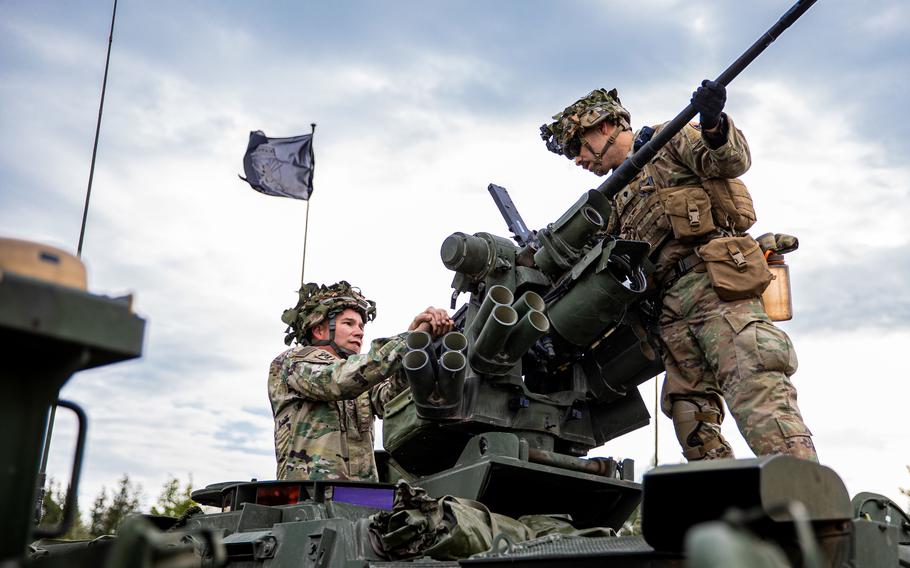
U.S. Army National Guard soldiers stand in formation during a handover ceremony at Bemowo Piskie Training Area, Poland, Feb. 11, 2022. A razor-wire wall will be erected along Poland’s border with the Russian military exclave of Kaliningrad, about 50 miles from Bemowo Piskie. (Adrian Patoka/U.S. Army)
Poland has begun building a razor-wire fence along its 130-mile border with the Russian military exclave of Kaliningrad over concerns that Moscow could instigate a migration crisis in the area, Poland’s defense minister said Wednesday.
The barrier, which will be 8 feet tall and 10 feet deep, is being constructed not far from where a U.S.-led battlegroup is positioned to defend a vulnerable swath of NATO territory.
Construction has begun on the wall, Defense Minister Mariusz Blaszczak told reporters in Warsaw.
“The barrier will be made up of three rows of razor wire, such as is used by armies the world over,” Blaszczak said.
The barrier, described as temporary, also would include an electronic monitoring system and cameras.
Although Blaszczak cited a potential migrant crisis in the area, much like the one last year along Poland’s border with Belarus, the broader area has been a long-standing security concern for NATO allies.
Western security analysts have cautioned that in the event of a crisis, Russia could seal off the Baltic states from the rest of NATO by seizing the Suwalki Gap, a vulnerable choke point that connects Poland to Lithuania.
A quick-reaction NATO force that consists of hundreds of U.S. and other allied soldiers is based about 50 miles from Russia’s military hub in Kaliningrad.
Blaszczak said the fencing on the border with Kaliningrad is intended to accomplish the same result as the barrier Poland built to block the earlier influx of migrants. Polish and Western leaders accused Belarus, a Russian ally, of instigating the migration in an attempt to create division within the European Union.
It was effective in “preventing a hybrid attack from Belarus or slowing that attack down significantly,” he said.

U.S. soldiers prepare a machine gun on a Stryker during an exercise at Bemowo Piskie Training Area, Poland, Oct. 6, 2021. A razor-wire wall will be erected along Poland’s border with the Russian military exclave of Kaliningrad, about 50 miles from Bemowo Piskie. (Osvaldo Fuentes/U.S. Army)